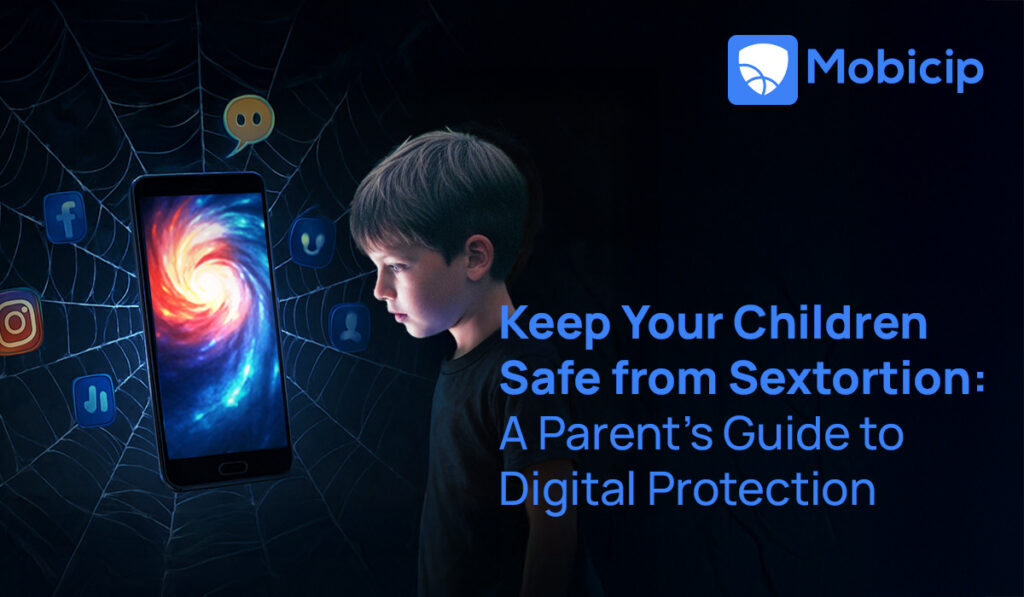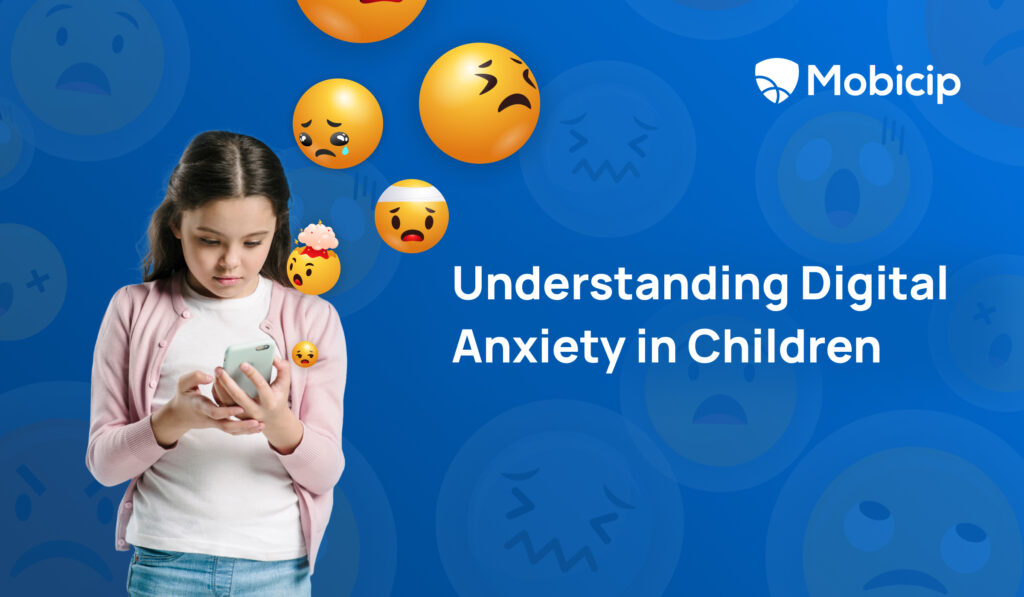How to Keep Your Children Safe from Sextortion: A Parent’s Guide to Digital Protection

Sextortion is a form of online sex abuse where children or teenagers are coerced into sending sexually explicit images or videos and then threatened with public exposure unless they pay money or provide more content. While some cases involve individuals acting alone, many recent incidents are linked to organised criminal gangs, often based overseas, who are motivated by financial gain. Offenders typically demand payment through wire transfers, gift cards, or cryptocurrency.
Recent reports show a sharp rise in sextortion cases. The FBI reported a tenfold increase in incidents between 2021 and 2022, involving victims as young as 10 years old. The National Center for Missing and Exploited Children (NCMEC) has also recorded unprecedented spikes in cases globally.
In this article, we’ll explain how sextortion works and what signs parents should look out for. We’ll also outline practical steps you can take to keep your child safer online, including how parental control tools like Mobicip can help.
How Common is Sextortion?
A large-scale survey of 16,693 respondents, published in Computers in Human Behavior (source), found that 14.5% reported being victims of sextortion, while 4.8% admitted to perpetrating it. The study revealed certain groups are at greater risk—LGBTQ+ youth, men, and younger individuals were more likely to report both victimization and perpetration. Interestingly, sextortion was least prevalent in the European countries included in the survey.
In the U.S., the nonprofit organisation Thorn, which works to protect children from online sexual exploitation, released a comprehensive report titled Sextortion & Young People: Navigating Threats in Digital Environments. Drawing from the experiences of 1,200 youth aged 13 to 20, the report uncovered disturbing trends:
- 1 in 7 young victims (15%) said they harmed themselves after experiencing sextortion. This number nearly tripled to 28% among LGBTQ+ youth.
- 1 in 6 (18%) were pressured to send more sexual images, leading to cycles of revictimization.
- 1 in 3 victims (36%) knew their abuser in real life, making the abuse more personal and psychologically damaging.
- Alarmingly, 17% of victims were just 12 years old or younger when first targeted.
Although adults can also fall prey to sextortion, children and teenagers are particularly vulnerable because they often get trapped in these situations innocently, without fully understanding the risks or knowing how to escape. This makes sextortion a uniquely urgent and serious threat for families, demanding greater awareness and proactive parental involvement.
What Is Sextortion and How Does It Work?
In their initial contact with a young person, predators often send friend requests and approach teens with compliments, flattery, or promises of romantic interest. Some offer things of value to children—like modeling opportunities, gaming credits, cryptocurrency, or gift cards—in exchange for a “quick picture.” In some cases, they may even hack devices to uncover sensitive material.
Common types of sextortion include:
- Financial Sextortion: Fake profiles lure victims into sharing sexual images, followed by blackmail for money.
- Email Sextortion: Scammers send threatening emails claiming to have hacked webcams—often baseless.
- “Age Play” Trap: Criminals pose as adults, then claim to be minors to extort targets.
- Sexual Deepfakes: AI-generated explicit content created from innocent photos to threaten exposure.
- Sexploitation: Instead of money, perpetrators demand more sexual content, driven by personal gratification.
Predators also use various communication tactics to gain control and avoid detection:
- Starting conversations on social media or gaming apps, where children are more relaxed and unsuspecting.
- Quickly shifting conversations to encrypted messaging platforms, like WhatsApp, Snapchat, or Telegram, to make tracking difficult.
- Using fake identities and profile pictures, often pretending to be a peer or someone attractive.
- Recording video chats and preserving entire chat histories to use as leverage.
- Stalking public profiles to gather information about family members, friends, and social circles, making threats more personal and intimidating.
Why Children Are Vulnerable to Sextortion
Children and teenagers are particularly susceptible to sextortion because they are still developing emotionally, socially, and psychologically. They are frequent users of online spaces but often lack the maturity or experience to identify manipulative behavior. Predators deliberately target these vulnerabilities, using anonymity, deception, and emotional manipulation to trap young victims.
Curiosity About Relationships and Sexuality
Adolescents are naturally curious about their changing bodies, relationships, and sexuality. Predators exploit this curiosity by initiating seemingly harmless conversations that quickly turn sexual. Many young people may not recognize early warning signs and can be easily lured into risky interactions online.
Peer Pressure and Fear of Missing Out (FOMO)
Peer influence is extremely powerful during the teenage years. Youngsters may feel pressure to appear mature, adventurous, or “cool” among friends. This can make them more willing to engage in risky online behavior, such as accepting friend requests from strangers or sharing private photos.
Need for Validation and Attention
Many children crave approval, validation, and attention—especially on social media. Sextortionists take advantage of this by offering compliments, affection, and promises of love or friendship. This emotional manipulation lowers the victim’s guard and makes them more trusting.
Emotional Vulnerabilities: Loneliness and Low Self-Esteem
Young people struggling with loneliness, bullying, or low self-esteem are more likely to engage with strangers online. Predators identify and exploit these emotional needs by positioning themselves as caring friends or romantic partners.
Online Anonymity and Lack of Awareness
Predators hide behind fake identities and anonymous accounts, making it difficult for children to know who they are really talking to. Young people often underestimate the risks of online interactions, especially when conversations move to private or encrypted apps, giving predators more control.
Lack of Adult Supervision
Many children use smartphones, tablets, and computers without adequate adult supervision. This unsupervised access increases their risk of encountering harmful individuals online, especially when parents are unaware of which apps or platforms their children use regularly.
Limited Knowledge of Digital Safety
Even tech-savvy teenagers may not be fully aware of online safety practices, privacy settings, or red flags of grooming behavior. Without proper guidance, children are less equipped to protect themselves from deceptive tactics used by online predators.
Warning Signs That Your Child May Be a Victim
Sextortion can happen quickly and often in complete secrecy. Many children feel too scared, ashamed, or confused to tell anyone what’s happening. That’s why it’s important for parents to stay alert to behavioral changes that could signal trouble. Trust your instincts—if something feels off, it’s always worth checking in.
Emotional Impacts of Sextortion
Pay attention to sudden or unusual changes in your child’s behavior, such as:
- Becoming unusually secretive about their phone or computer use.
- Showing signs of anxiety, fear, or mood swings without a clear cause.
- Sudden withdrawal from family activities, friends, or hobbies they previously enjoyed.
- Becoming obsessively attached to devices, checking messages at odd hours or appearing tense after being online.
Abnormal Online Activity
In addition to behavior, certain digital clues can indicate something is wrong:
- Unexplained money transfers or requests for gift cards or online payments.
- Deleted chat histories, missing browser history, or cleared social media activity.
- Creation of new, secretive social media or gaming accounts your child hasn’t told you about.
- Receiving unusual friend requests or messages from unknown accounts.
Warning Signs That Your Child May Be the Perpetrator of Sextortion
While much focus is on victims, it’s equally important to recognize if a child may be engaging in harmful behavior online. Warning signs include:
- Spending excessive time on encrypted messaging apps or private chat groups.
- Hiding devices or quickly switching screens when adults are nearby.
- Displaying a lack of empathy towards others’ feelings or engaging in inappropriate jokes about sexual content.
- Possessing unexplained money, gift cards, or digital currency.
- Bragging about manipulating others online.
Even subtle changes—a child acting more withdrawn or unusually defensive—can be important signals. Staying engaged with your child’s online life and maintaining open communication are key to spotting early warning signs and offering timely support.
And do not underestimate the parental instinct. If your gut says something is wrong, it probably is.
How to Talk to Your Child About Sextortion
Talking to your child about sextortion can feel uncomfortable, but it’s one of the most important steps in keeping them safe. Open, non-judgmental communication builds trust and ensures that your child feels comfortable coming to you if something goes wrong. Start early, keep conversations age-appropriate, and make it clear that asking for help is always okay—no matter what.
Start with Simple, Age-Appropriate Conversation Starters
Tailor your language to your child’s age and maturity. For younger kids, you can focus on privacy and safe online friendships, while with teens you can be more direct.
Example for younger children:
“If someone online ever asks you for pictures or makes you feel uncomfortable, you can always tell me. You won’t be in trouble.”
Example for teenagers:
“There have been cases where people trick others into sharing private photos and then use it to scare them. Have you ever seen anything like that online?”
Use Real-Life Stories or News as a Conversation Starter
Share simple news stories about sextortion cases (without sensationalizing) to make the risks relatable.
Example:“I read a news story about a boy your age who got a friend request from someone pretending to be a girl. They chatted, and after sending a photo, he was blackmailed for money. It happened really fast. Have you ever heard of something like that happening? What would you do if someone tried that with you?”
Keep the Door Open for Honest Conversations
Reassure your child that they will never be blamed or punished for coming to you with a problem. Regularly remind them that it’s never too late to ask for help, even if a mistake has already been made.
Digital Safety Practices Every Family Should Follow
Building good digital habits at home is key to keeping children safe from sextortion and other online risks. Parents don’t have to be tech experts—consistent rules and honest conversations make a big difference.
- Set rules like no devices behind closed doors, no screens after bedtime, and regular device-free family time to reduce unsupervised online access.
- Teach children about responsible use of webcams.
- Teach children never to share personal information, photos, or videos online, even with people they think they know.
- Help your child use privacy settings on all apps and games and create strong, unique passwords for each account.
- Talk to your child about the risks of chatting with strangers online and encourage them to ignore or block unknown friend requests.
- Use tools like Mobicip to monitor your child’s online activity, filter inappropriate content, manage screen time, and receive alerts when there’s risky behavior.

What to Do If Your Child Is a Victim
Discovering your child has been targeted by sextortion can be overwhelming, but your response can make a crucial difference in their recovery. Here’s a step-by-step guide on how to handle the situation effectively:
- Stay calm and supportive. Your child is likely feeling scared, ashamed, or confused. Reassure them they are not alone and you will help them through this.
- Do not blame the child. Avoid anger or judgment. Remember, predators are highly manipulative and children are victims, not culprits.
- Collect evidence. Take screenshots of all messages, chats, photos, and any identifying information about the predator before blocking or deleting anything.
- Report to law enforcement and online platforms. File a police report and report the account on the platform where the abuse occurred.
- Use available resources. Report cases through the NCMEC CyberTipline and use tools like Take It Down to help remove images from the internet.
- Prioritize emotional support. Consider professional counseling to help your child cope with trauma, anxiety, or shame linked to the experience.
How to report Sextortion
Here are key reporting channels and resources to take immediate action:
- FBI Internet Crime Complaint Center (IC3) – for reporting online sextortion cases in the U.S.
- NCMEC CyberTipline – to report online sexual exploitation of minors.
- Local law enforcement – contact your nearest police station for immediate help.
Laws in many countries, including the U.S., specifically protect minors from online exploitation under child pornography, extortion, and cybercrime statutes. For example, in the U.S., laws like the PROTECT Act, the Protect Our Children Act, COPPA (Children’s Online Privacy Protection Act) and KOSA (Kids Online Safety Act) are aimed at protecting children from online exploitation, coercion, and unlawful data collection. Reporting ensures authorities can intervene and potentially stop predators from targeting others.
Conclusion
The best defense isn’t fear—it’s connection. The more present you are in your child’s online world, the fewer places predators have to hide. It’s not about spying; it’s about building enough trust that your child turns to you before things spiral. The internet isn’t going away, but with active parenting, it can be a safer place. Your awareness is their shield, your guidance their anchor. Start the conversation today—it may be the most important one you have.





